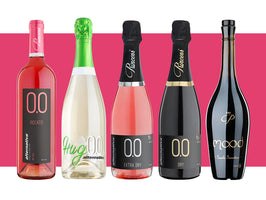
They said curiosity killed the cat. Well, they were wrong. In fact, we think curiosity is kind of wonderful… especially when you’re beginning your own alcohol-free adventure. So, if you’re wondering how alcohol-free beer makes its way into the world, we’re going to tell you, dammit. And no-one is going to stop us.
First though, a disclaimer. There’s a lot of geeky techie stuff here, so if you need an early exit, here’s the short version:
Making great alcohol-free beer is hard. Really hard. Our Zerologists will tell you it’s an artform, and to be honest they’re probably right. Read on to quench your curiosity and find out how the magic happens, or click here for your shortcut to the modern masterpieces of alcohol-free beer.
How is alcohol free beer made?
There’s actually a few ways that alcohol-free beer can be made; dealcoholisation, fermentation free, dilution and limited fermentation are usually the most common. Although, almost all alcohol-free beers begin the same way, which is by “mashing” malted barley with hot water in order to extract the sugars and create a wort.
‘Wort’ happens next? We’re glad you asked (sorry). Once extracted, the wort is boiled with hops and fermented. The yeast in the fermentation stage eats the sugars in the wort, turning them into alcohol and other by-products such as carbon dioxide and flavour-adding compounds.
How is alcohol removed from non-alcoholic beer?
Of the four most common ways to make alcohol-free beer, dealcoholisation is the most widely used. That’s the process of removing alcohol from beer, and as a result, turning it alcohol-free.
The alcohol is removed using one of three ways: steam distillation, reverse osmosis or water vapour or gas stripping. We’ve detailed a little more of these below (bear with us).
Steam distillation
By heating beer, it’s possible to remove the alcohol from it, as the boiling point of alcohol is lower than water. However, this can affect the flavours, and can even end up removing them entirely - definitely not what you want from your Friday tipple!
There are a few ways to reduce this effect, whether it’s vacuum distillation, which heats the beer under low pressure, or alternatively using scary-sounding and slightly high-tech kit a spinning cone column system. This separate the flavours from beer, before adding them back once it’s all been dealcoholised.
Reverse osmosis
This is the process where high pressure is used to force the beer through a membrane which captures large molecules (like flavour molecules), whilst allowing water and alcohol to pass through. Clever eh? Ultimately, this leaves a more concentrated beer, which becomes non-alcoholic beer once the water is added back in. Are you still with us? Good. You really are curious.
Water vapour and gas stripping
Again… more hi-tech shenanigans - there’s a theme here, isn’t there? The water vapour and gas stripping technique involves gently heating the beer under a vacuum, then passing water vapour through it. Here, the water vapour pulls the alcohol from the beer and carries it away.
This technique also runs the risk of reducing the flavours in the beer, like dealcoholisation, so to minimise this effect, flavours may be separated from the alcohol, and then added back in later.
Do alcoholic and non-alcoholic beer taste the same?
Although alcoholic and non-alcoholic beer may not taste exactly the same, they can be pretty da*n similar. And when you find a great one, you really will struggle to tell the difference. The best bit? We only sell the great ones, so you’re in the right place – you can discover some of our favourites here or find out the benefits of drinking alcohol-free beer.



